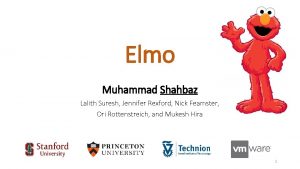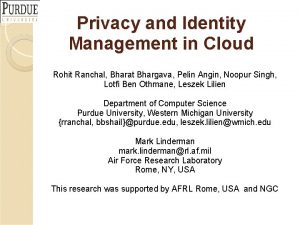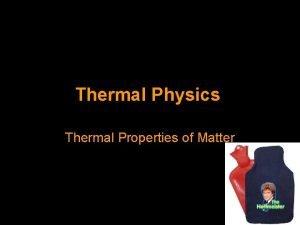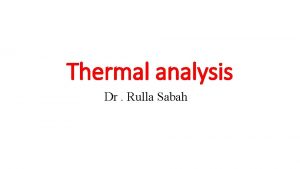Thermal Management A M Villavan Sai Lalith Rohit







- Slides: 7

Thermal Management A. M. Villavan Sai Lalith Rohit K. Anudeep

Thermal Management : • Heat generated by electronic devices and circuitry must be dissipated to improve reliability and prevent premature failure • Satellite is in synchronous orbit, where extremes of solar radiations are present • Satellite consists of many electronic devices • The performance and the reliability of everything in spacecraft and satellite are more or less sensitive to the temperature

Typical temperature range for selected satellite components Components Typical temperature range, ℃ Batteries 5 to 20 Electronics 0 to 40 Infrared detectors On-board computer Propellant, hydrazine Solar arrays Structures - 200 to – 80 - 10 to 50 7 to 35 - 100 to 100 - 45 to 65 3/47

Spacecraft thermal control • In spacecraft design, the Thermal Control System (TCS) has the function to keep all the spacecraft parts within acceptable temperature ranges during all mission phases • Thermal control is also necessary to keep specific components (such as optical sensors, atomic clocks, etc. ) within a specified temperature • The thermal control is because if a component encounters a temperature which is too high or to low, it could be damaged or its performance could be severely affected

• The thermal control subsystem can be composed both of passive and of active items and works in two ways: Ø protects the equipment from too hot temperatures Ø protects the equipment from too cold temperature Passive Thermal Control System (PTCS) items include: • multi-layer insulation(MLI), which protects the spacecraft from excessive solar or planetary heating • thermal fillers to improve thermal coupling at selected interfaces

• thermal washers to reduce thermal coupling at selected interfaces • thermal doublers to spread on the radiator surface the heat dissipated by equipment • mirrors to improve the heat rejection capability Active Thermal Control System (ATCS) items include : • electric heaters to keep the equipment temperature above its lower limit during the mission cold phases • fluid loops to transfer the heat dissipated by equipment to the radiators.

They can be : • single-phase loops, controlled by a pump • two-phase loops, composed of heat pipes (HP), loop heat pipes (LHP) or capillary pumped loops (CPL) • Thermo electric coolers












